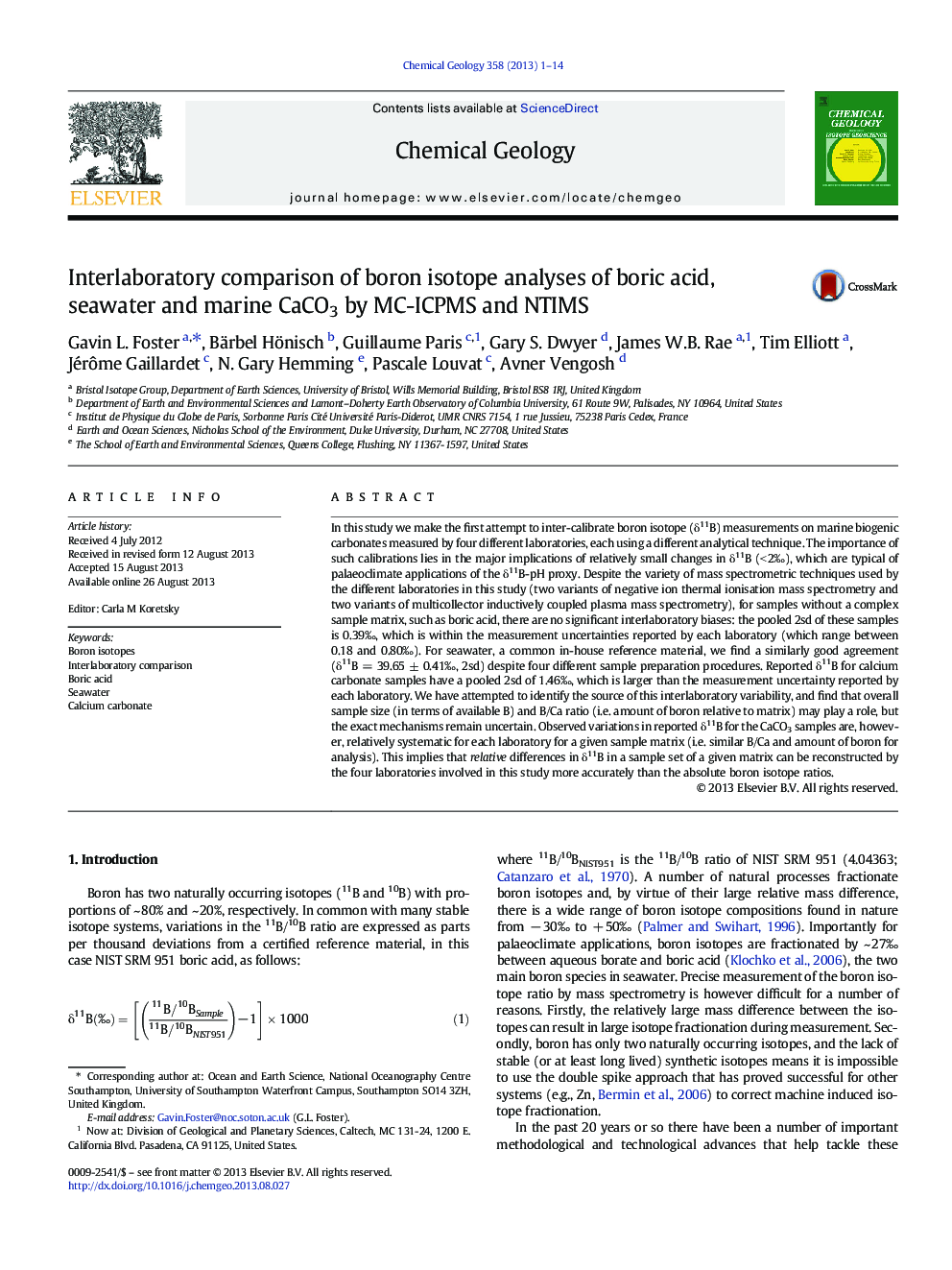| کد مقاله | کد نشریه | سال انتشار | مقاله انگلیسی | نسخه تمام متن |
|---|---|---|---|---|
| 6436802 | 1637611 | 2013 | 14 صفحه PDF | دانلود رایگان |

- No significant interlaboratory bias in boric acids and seawater, with pooled 2sd <Â 0.4â°
- Interlaboratory offsets of ~± 1.0Ⱐexist for carbonates but relative variations are comparable.
- Variability in CaCO3 samples may be related to sample size and B/Ca.
In this study we make the first attempt to inter-calibrate boron isotope (δ11B) measurements on marine biogenic carbonates measured by four different laboratories, each using a different analytical technique. The importance of such calibrations lies in the major implications of relatively small changes in δ11B (< 2â°), which are typical of palaeoclimate applications of the δ11B-pH proxy. Despite the variety of mass spectrometric techniques used by the different laboratories in this study (two variants of negative ion thermal ionisation mass spectrometry and two variants of multicollector inductively coupled plasma mass spectrometry), for samples without a complex sample matrix, such as boric acid, there are no significant interlaboratory biases: the pooled 2sd of these samples is 0.39â°, which is within the measurement uncertainties reported by each laboratory (which range between 0.18 and 0.80â°). For seawater, a common in-house reference material, we find a similarly good agreement (δ11B = 39.65 ± 0.41â°, 2sd) despite four different sample preparation procedures. Reported δ11B for calcium carbonate samples have a pooled 2sd of 1.46â°, which is larger than the measurement uncertainty reported by each laboratory. We have attempted to identify the source of this interlaboratory variability, and find that overall sample size (in terms of available B) and B/Ca ratio (i.e. amount of boron relative to matrix) may play a role, but the exact mechanisms remain uncertain. Observed variations in reported δ11B for the CaCO3 samples are, however, relatively systematic for each laboratory for a given sample matrix (i.e. similar B/Ca and amount of boron for analysis). This implies that relative differences in δ11B in a sample set of a given matrix can be reconstructed by the four laboratories involved in this study more accurately than the absolute boron isotope ratios.
Journal: Chemical Geology - Volume 358, 4 November 2013, Pages 1-14